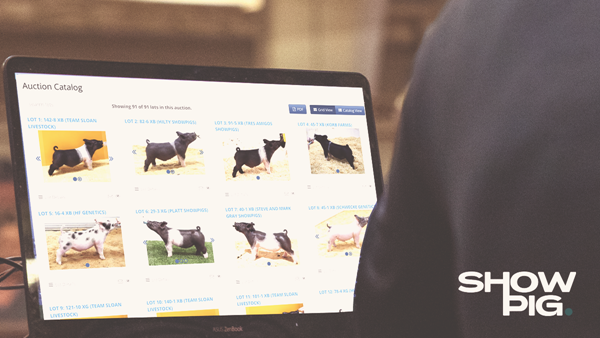
As show pig producers and exhibitors, loading the trailer and driving to a show is natural. Thousands of pigs are transported daily across the country and even worldwide. While husbandry and health are top of mind when these animals are in motion, the word ‘traceability’ is probably not.
In 2018, the global swine industry was reintroduced to the foreign animal disease, African Swine Fever. While the disease has devastated the industry in parts of Asia and Europe, the United States is diligently taking all precautions to keep it out of the country. While precautions are important, response plans if the disease hits the United States are also a high priority.
With the concern of a foreign animal disease outbreak, organizations and associations have established working groups and offered tabletop exercises, along with other efforts, to best prepare producers, industry leaders, government officials, and the greater food system in the case of an outbreak. Working hand-in-hand with the government is an important aspect of outbreak preparedness, as regulation will likely be a solution moving forward. The word “regulation” can be daunting, bringing more hoops for those involved.
You probably wonder, “What does this mean for me as a show pig producer?”
From a show pig producer standpoint, we have good news to share.
An organization known as U.S. SHIP, or the U.S. Swine Health Improvement Plan, is a producer-driven national program that establishes consistent health standards that serve as a platform for control of foreign animal diseases (FAD) like African Swine Fever (ASF) and Classical Swine Fever (CSF). For the first time since the organization was established, there was unanimous support for forming an Exhibition Swine Working Group. The creation of this group brings together a diverse team of state pork association leaders, state animal health officials, swine organizations, academia and livestock show operators.
Jesse Heimer, a show pig producer from Taylor, Missouri, was elected to serve as a voice of the show pig industry as conversations and actions continue to prepare and prevent an FAD outbreak.
“Swine producers have similar values in mind; they want to humanely raise a protein source that not only cares for their communities but also for their families,” said Heimer. “Representing the show pig community on U.S. SHIP is an honor and a responsibility to communicate the aligned beliefs that commercial and show pig producers share. The show pig community must have a voice and seat at the table in creating future regulations, as an outbreak would greatly impact the show pig community as well as commercial producers.”
Heimer will serve in this role throughout the next year and is dedicated to representing the show pig industry to realistically create a set of standards and procedures that would allow all swine producers to continue to operate in the event of a foreign animal disease.
What’s next for show pig producers?
Stay tuned. Showpig is committed to bringing our audience industry news that would impact our consignors and exhibitors’ bottom line. The best next step would be to look into AgView, an online tracking system offered through the National Pork Board. AgView allows producers to upload premises information, pig movement information, and Secure Pork Supply documentation that can be shared instantly at the producer’s permission with their state vet’s AgView account if traceability is required, like during a FAD outbreak.
Learn more about traceability in the Showpig blog, “Tracking Their Steps.”





















